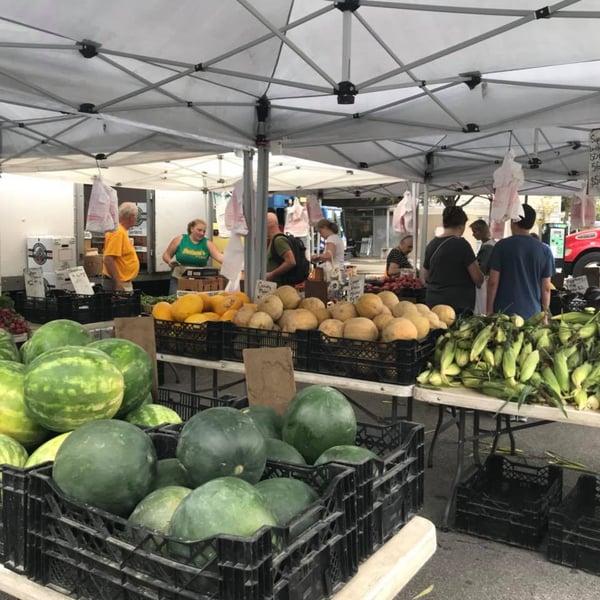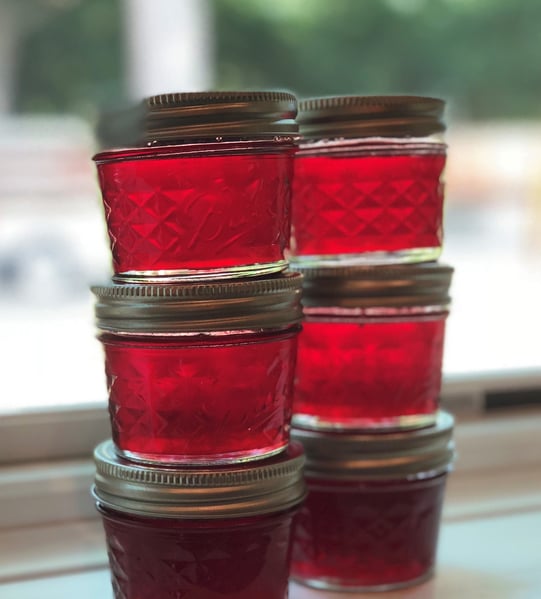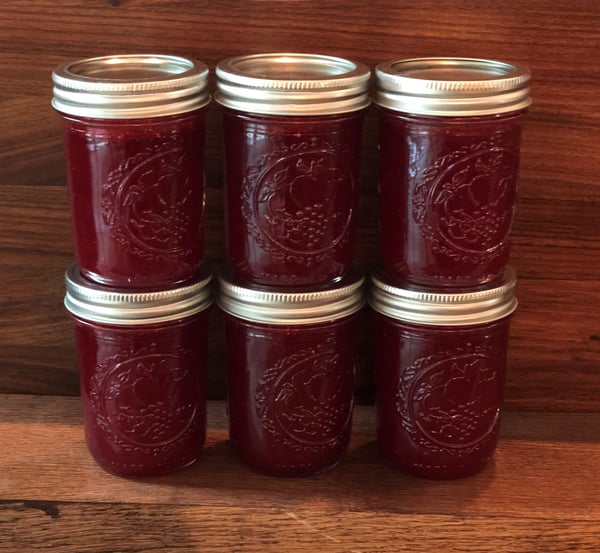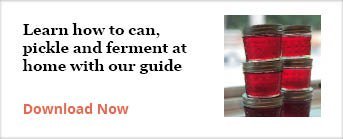Local farmers markets are bursting with late-summer produce right now. Wouldn't it be great if you could enjoy this bounty in the middle of a frigid Midwest winter? You can, simply by canning, pickling or fermenting what's currently in season.

Lincoln Square Farmers' Market
There are many reasons home cooks tend to shy away from food preservation. Here are just some of them:
- They don't know how to do it.
- They are scared they will make someone sick (botulism, anyone?).
- They don't want to purchase a lot of expensive equipment.
- They don't have the time.
- They feel canning, pickling and preserving are outdated methods. That's what grandmas do, right?

We'll dispel all of these myths right now in relation to canning. As for the other two methods, pickling is actually something you do to vegetables or fruits before you would can (i.e. process) them so there's typically not a whole lot of fear surrounding that technique. Fermentation is whole other story, but my colleague Chef Christy Williams will put your fears to rest with these 3 Helpful Tips for First-Time Fermenters.
1. They don't know how to do it.
Canning is not difficult. You don't need a special skill set to do it. It's simply a process of immersing hot jars of food into boiling water long enough to remove all of the air from the jars, thereby sealing them. If you can follow a recipe, you can can.
2. They are scared they will make someone sick (botulism, anyone?).
This is probably the biggest concern and one that shouldn't be taken lightly. However, if you follow a few simple safety rules, you don't need to worry about botulism.
- Water for canning should always be at a full rolling boil. The temperature of the water may drop a bit when you add the jars. Wait until it returns to a full boil to start your timer for processing.
- Follow a reputable recipe source and follow the timing guidelines for boiling the jars, which will range based on the type of food you are processing.
- Mind the headspace. That's the distance between the surface of the food and the lid of the jar. This will typically be about a 1/2 inch, again depending on the food.
- Always start with hot sterilized jars and lids. We have a trick to share for this in our new download!
- Don't use jars not intended for canning or any jars that are knicked or cracked.
3. They don't want to purchase a lot of expensive equipment.
Canning doesn't require a lot of special equipment. At the bare minimum, you'll need a really big, heavy pot (most of you probably already have a stockpot, I'm guessing), good jars and lids. Of course, there are pieces of equipment that will make the process easier, such as jar lifters which are also inexpensive, but you could always hold off on buying additional equipment until after you decide if you enjoy canning first.
4. They don't have the time.
Canning does not have to take all day. Those people who set aside a day or more for canning projects usually have a prolific garden and therefore a lot of produce to "put up." In reality, you can have one batch of canned jam (or pickles or salsa or whatever you are canning) in about an hour, from start to finish. People who are doing this for an entire day are simply repeating the process again and again.
5. They feel canning, pickling and preserving are outdated methods. That's what grandmas do, right?
As with many food trends, today's hobby was yesterday's way of life. In the early 19th century before refrigeration, Frenchman Nicolas Appert developed the process of sealing food in jars and sterilizing them. By the turn of the century, canning was a common household practice. In fact, during both World Wars, the U.S. government encouraged people to grow their own food and preserve it themselves so as to reduce food waste and ensure key commercial crops went to soldiers.
Over the years, we lost our fondness for homemade preserves and began to rely on mass produced food. But recently, the natural food movement and a renewed interest in the environment are bringing food preservation techniques back into the spotlight. Weekly trips to the farmers market are the norm, and we're seeing more house-made jams, jellies and pickles on restaurant menus thanks in part to the influence of chefs like Chicago legend and Vie's Chef Paul Virant, Blue Hill's Dan Barber and Momofuku's David Chang.
We can't even keep up with the amount of cookbooks that are available about food preserving now. From The Art of Fermentation to The Joy of Pickling to Food in Jars to of course, Ball, there are a ton of resources out there for home cooks. Perhaps Eugenia Bone's Well-Preserved introduction captures the idealism of the current canning moment best: "Home canning reduces your carbon footprint, increases the quality of your dining experience, and provides a sense of independence from the industrial food complex."

If you are interested in exploring canning, pickling and fermentation at home, a great place to start is The Chopping Block's new guide to Preserving Food. In this free download, you'll get:
- A description of each of these food preservation methods that we promise won't confuse you and how to tell the differences between each,
- Necessary equipment to can, pickle and ferment at home (it's not as much as you might think!),
- Recipes for canning, pickling and fermenting that you can trust,
- Videos to demonstrate the techniques,
- and additional fun resources like how to host a canning party!











